In a small aquarium a common goldfish will grow to possibly four inches and no greater. In a large lake a common goldfish will normally grow to six inches with an occasional fish getting to eight inches. If you want a bit of a rant followed by a very long and boring analysis of the subject read on.
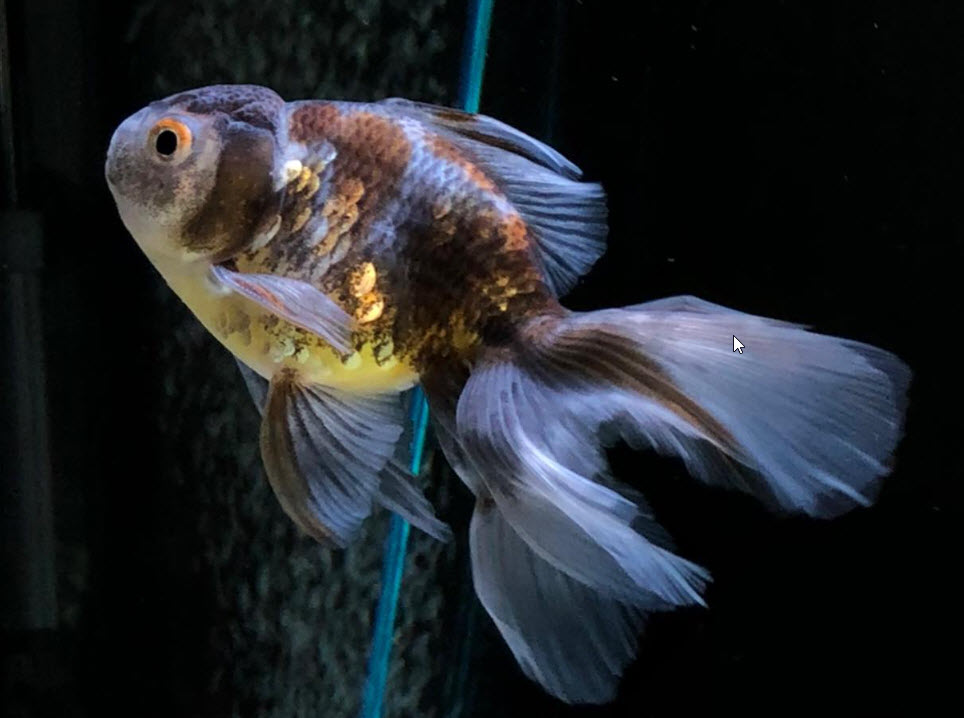
In Depth Analysis of Goldfish Size
One of the common threads to the PETA campaign against goldfish in aquariums has been hugely exaggerating the size a goldfish will ultimately grow to. “Goldfish will be one foot in ponds” is a common refrain. One commentator said two feet! The website seriouslyfishy.com out of England said:
For example a goldfish, Carassius auratus, maintained in a 30 cm x 20 cm aquarium may survive for a number of years and remain at a manageable size of a few centimeters in length, and initially this might seem a reasonable outcome.
However, when maintained properly C. auratus can reach 30 cm SL and live for 30 or 40 years meaning the hypothetical individual described above would not only be highly stunted in terms of growth but fail to reach a quarter of its potential age even if it survives for 5 or 6 years.
seriouslyfishy.com
Understand 30 centimeters SL [standard length] equates to 12 inches SL or 15 inches total length for a common goldfish. This British site is obviously one of the many websites which front for PETA. The claims in this website are ALL completely fictional. These claims are simply designed to prevent keeping goldfish in ANY aquarium via ANY means necessary, including just out and out lies. This is a classic case of an extremist view where they think the “end justifies the means”.
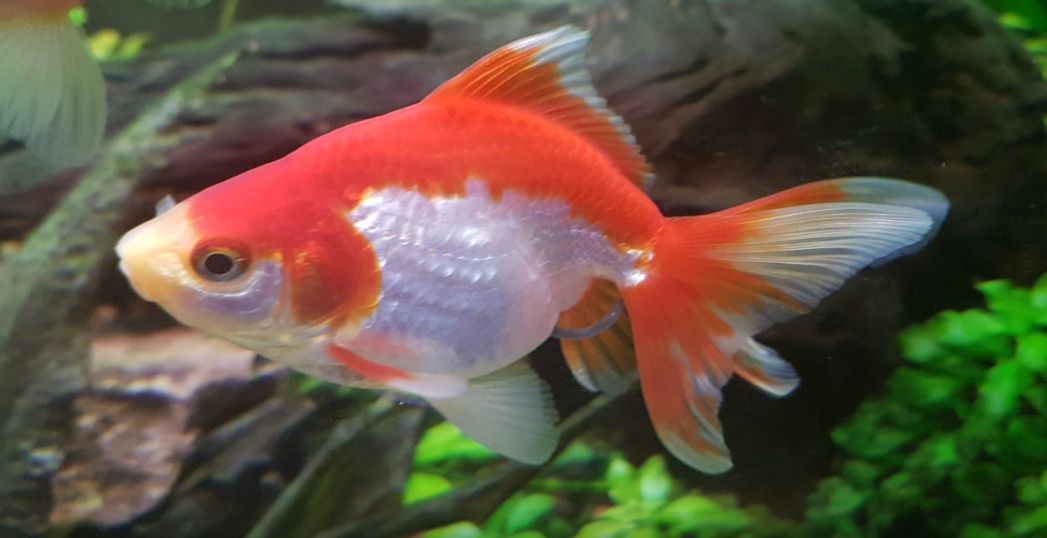
What is the truth about goldfish size? References are always useful:
All modern goldfish are decedent from Chinese Crucial Carp. There is some debate on whether or not the Japanese Crucial Carp is the ancestor from which modern goldfish have evolved, but this has been debunked by a well-documented experiment in which gene sequences of goldfish were tested.
Komiyama et al., 2009, pp 5-11:
The crucian carp is a medium-sized cyprinid, typically 15 cm in body length.
Fishbase
So the ancestor of the goldfish averages 15 centimeters or 5.9 inches in body length (not including the tail).

In the wild, per the USGS, goldfish attain a size of 12 to 22 centimeter, or 4.7 to 8.7 inches standard length (otherwise known as body length exclusive of the tail fin). (https://nas.er.usgs.gov/queries/factsheet.aspx?SpeciesID=508). The average of 12 and 22 is 17 cm (6.7 inches).
So the PETA folks are claiming a 12 inch (30 centimeters) body length on a fish who biologists say only get 5.9 to 6.7 inches (15 to 17 centimeters) in body length. Understand, a 12 inch fish will weigh 8 (that’s right 8!) times the weight of a 6 inch fish, so this difference between fiction and reality is huge.
Now one adaption that many fish including the goldfish have is that each brood of young will produce large variations in ultimate size. This is a very useful trait that insures survival of the goldfish species. But it also results in what in scientific terms are called “outliers”. In a million goldfish there will always be a few fish which are very small and a few fish which are extremely large. This does not define the size of the species nor does it define the size a fish can be expected to attain in an aquarium.

This size of 5.9 to 6.7 inches (15 to 17 centimeters) will raise howls of protest. But I have a fish breeder down the road who builds ponds for a living and breeds both veiltail goldfish and koi for people to put in those ponds. He has ponds on his property which have been breeding goldfish for thirty years. And when he nets these goldfish the largest fish that can be seen measures in at just six inches of body length with a tape measure (I’ve personally measured them!). Note he doesn’t sell the large fish as they are the best breeders.
Another proof can be found on the YouTube channel Ohio Fish Rescue. This outfit takes in fish that have gotten too big for the aquariums they were in. They have hundreds of varieties of fish in many large tanks. The largest goldfish they have are some comets of about six inches in body length. If anyone were to have the largest goldfish ever in captivity it would be Ohio Fish Rescue.
This is the largest “common” goldfish I have ever seen.

This common goldfish was grown for five years under ideal conditions in 200 gallon aquarium. It is about seven inches in body length. This is the largest size a common goldfish will normally grow to under ideal conditions. It is NOT one foot or fifteen inches.
The largest “fancy” goldfish is smaller in length but much larger in girth. Here is a photo of the largest we have seen in fancy goldfish:
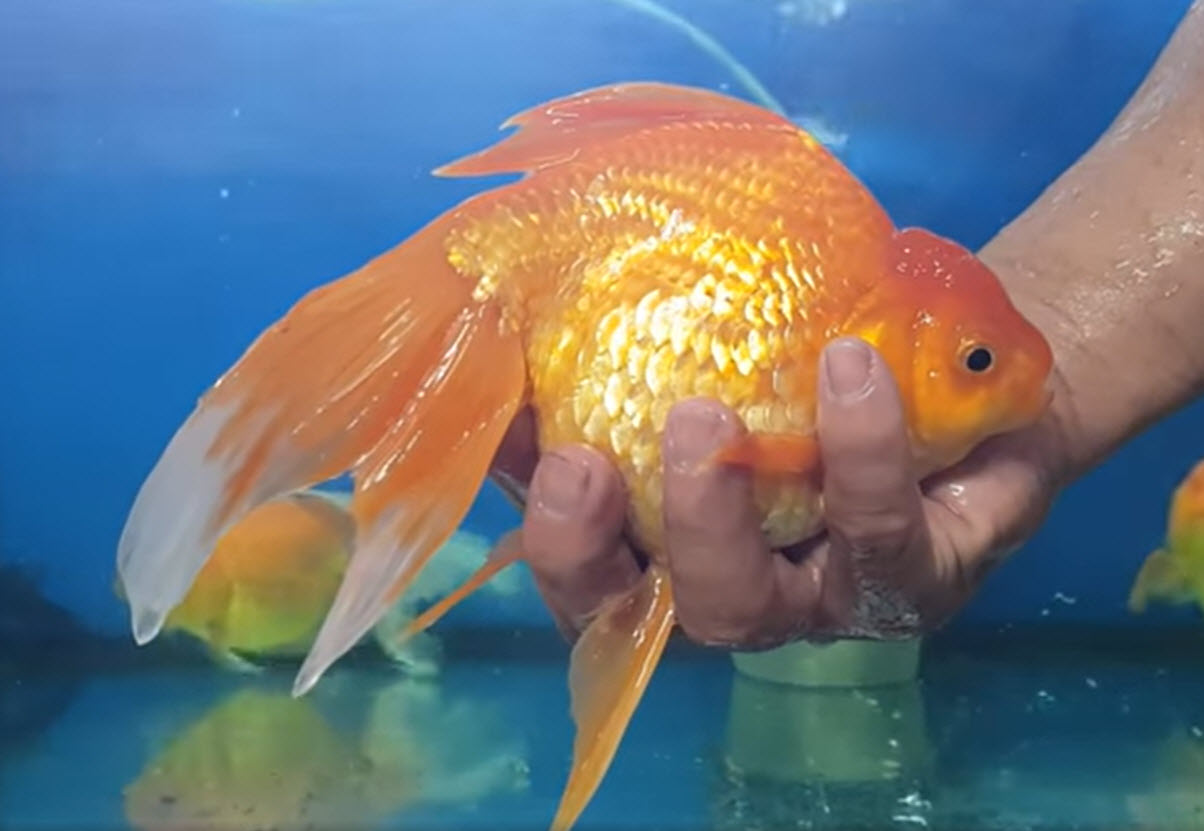
And one has to love the folks on Facebook who don’t seem to understand how Photoshop works. These photos of people holding two foot long goldfish are all Photo shopped images. They aren’t real!
The few authentic photos are orange or gold colored fish with barbels and/or a very concave forehead, which indicates they are some sort of koi/carp/goldfish hybrid. For instance the 6 pound “goldfish” below from the news of December 8, 2020 has large barbels and is obviously a hybrid koi or carp. But the news reported it as a goldfish.
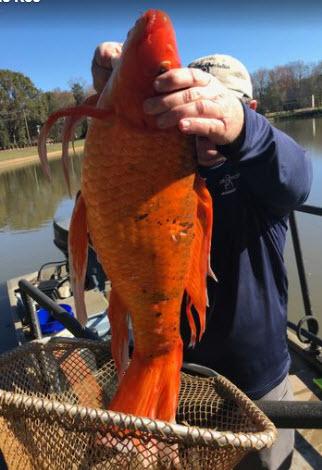
Now this comes with a caveat. Some comet goldfish are six inches of body length and six inches of long flowing tail. These goldfish ARE a foot long. But they are the weight of a six inch fish, not the weight of a twelve inch fish. And weight is the determining factor in aquarium size requirements.
Growth Inhibiting Hormones
The inadvertent genetic selection by the Chinese with goldfish gave them a unique property. Goldfish do regulate their body size to the size of the container they are in. They do this with what are called growth inhibiting hormones (GIHs) or somatostatins (“The effects of somatostatin on serum growth hormone levels in the goldfish, Carassius auratus”. Cook et al, 1984, “The influence of mammalian and teleost somatostatins on the secretion of growth hormone from goldfish [Carassius auratus L.] pituitary fragments in vitro,” Marchant et. al., 1987, “Somatostatin inhibits growth of rainbow trout,” Very et. al., 2005, “Neuroendocrine Regulation of Growth Hormone Secretion and Growth in Fish,” Peng et. al. 1997)
When in small containers the goldfish produce these GIHs which reduce the amount of growth hormones produced and reduce the ability of the goldfish’s body to digest food. In goldfish this can produce a goldfish which only gets a body length of three and a half inches, versus a pond raised goldfish body length of seven inches.
What people fail to realize that is that a seven inch fish is eight times heavier than a three and a half inch fish and produces eight times the waste. So the effect of these hormones is considerable.
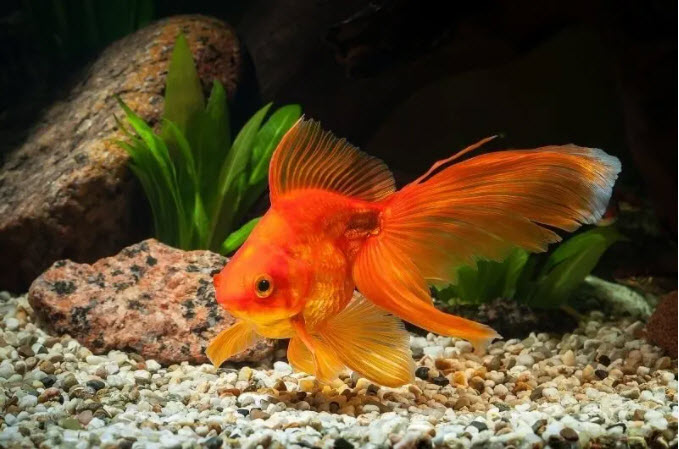
Now the question is is this GIH induced stunting painful or “bad” for the goldfish. One commentator on social media said:
There is a rumor going around that they will grow the size of their tank and that’s true, their growth is stunted and that will actually slowly kill them because their organs DON’T stop growing. So its a slow and painful death for goldfish who are kept in small tanks.
This is just patently false and is typical of the misinformation spread about goldfish. The evidence shows that small, stunted goldfish are actually more resilient and longer-lived than those that are grown to be large sizes. They do NOT have organs which keep on growing!
This is a photo of two forty year old goldfish:

These two forty year old goldfish are very small and have no evidence of compressed organs or any health problems. They are in an obviously very small tank. They had been in an aquarium this small their entire life and did just fine. Saying that these 40 year old fish are the victims of animal cruelty is obviously a huge stretch for which there is absolutely no concrete evidence.
The longest lived nine goldfish in the world have all been small three and a half to four inch common goldfish which were in small five to ten gallon aquariums. One of these had no filter! These fish have lived to be over twenty and in three cases to be over forty years of age. (https://puregoldfish.com/old/, https://www.oldest.org/animals/goldfish/)
Now the PETA folks say that goldfish dwarfed by growth inhibiting hormones only live a miserable short life of five to six years and that there is no evidence to the contrary. So the nine oldest living goldfish have spent their lives in small aquariums and all nine have been dwarfed by growth inhibiting hormones. But there is no evidence that goldfish can live long lives when dwarfed by hormones in a small aquarium? Huh???

“Stunting” is a very incorrect description of the dwarfing process. Growth inhibiting hormones are a very natural process. Hormones in humans are what determines what height a person grows to. So do we describe a five foot person as “stunted”? Or predict that they are going to die a painful early death? A more accurate term would be “hormone dwarfing”.
Note that the growth inhibiting hormones (GIHs) are NOT found in the water of the aquarium and are NOT affected by water changes. These are very complex unstable hormones with structures that have a chemical half life of only two to three minutes. GIHs only exist in the bloodstream of a given fish. One will NEVER find growth inhibiting hormones in the water of the aquarium. NEVER!
GIHs are produced by glands in the fish in response to the size of the tank they are in. The hormones are produced in incredibly small quantities and fed into the fish’s bloodstream. Other glands respond with other hormones and together these hormones prevent that fish and ONLY that fish from growing. Ten minutes after they are put into the fish’s bloodstream the GIHs are gone, decomposed. So the GIHs never get into the water at all. So a water change will have absolutely no effect on these hormone levels. And the growth inhibiting hormone level in one fish will have absolutely no effect on any other fish.

Note also that this hormone dwarfing is not a guaranteed process. Sometimes a goldfish in a small ten gallon tank will still grow to 6 inches in body length. The genetics of each fish varies.
Also this hormone dwarfing is reversible in most cases. A goldfish which has been kept in a small aquarium for say four years and then is put in a large aquarium can have a growth spurt and get almost as large as they would have been if they had been in the large tank all along.
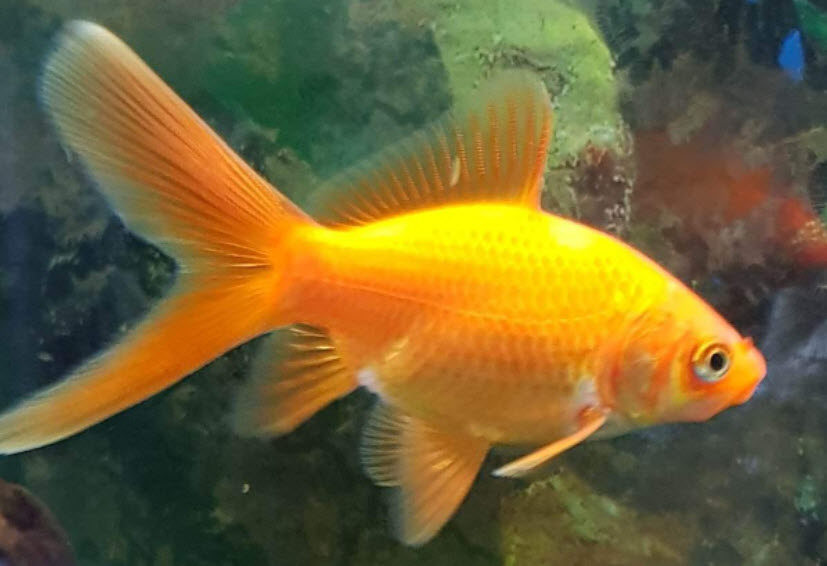
Darwin’s “Survival of the Fittest”
The explanation for the way that goldfish grow to the size of their container has to do with simple evolution. The Crucian carp from which goldfish are descended has an interesting trait. In large lakes it averages some six inches in body length. While in small ponds it averages four inches in body length. This natural adaption has been built on by the goldfish because of inadvertent selective breeding by the Chinese.
The Chinese both raised goldfish in ponds and they raised them inside in small earthenware containers. For some years a goldfish strain might be raised in a pond where the biggest fish had the best chance of survival. Then that strain might be raised inside in small containers where the smaller fish stood the best chance of survival.
A given strain might move back and forth many times. So goldfish strains which grew large in ponds and grew small in small containers evolved though “inadvertent genetic selection”. This is actually a classic example of how evolution works.
The ability of goldfish to grow to the size of their containers is unique among aquarium fish. But then only goldfish have had humans breeding them for such a long period of time. Perhaps in 500 years all aquarium fish will have this ability.

Growth Rate of Goldfish
Baby and juvenile goldfish CAN be a dirty fish if fed a lot of food frequently. They can also be a very clean fish if only fed sparingly. Adult goldfish are NOT dirty and eat pound for pound the same as any other adult fish.
What is difficult for people to wrap their heads around is that cold blooded creatures do not have the timetable growth of warm blooded creatures. A human male will stop growing at roughly 18 years of age, pretty much regardless of diet. A cold blooded creature doesn’t grow to a timetable like that.
Most juvenile fish only eat 3 to 4% of their weight per day till they reach adulthood. But a juvenile goldfish can eat 15% of its weight per day if fed often. If a baby goldfish is fed ten times a day at 15% of its weight per day it will grow to roughly six inches in three to five months in a large tank.
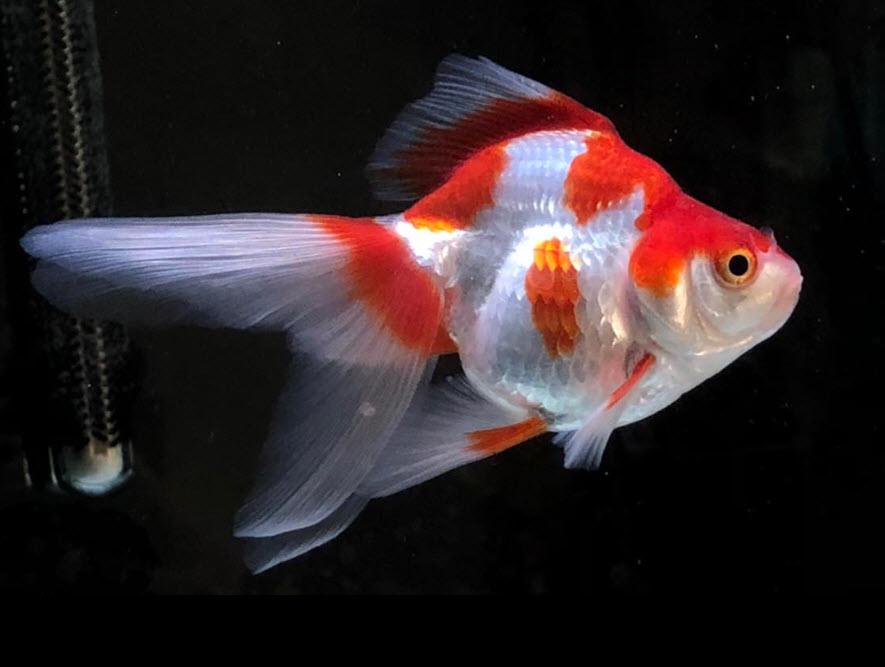
If this same goldfish is fed 3% of its weight per day of the same food it will take two to three years to reach only slightly less than six inches in body length (a limited diet will have a small effect on the size of cold blooded creatures but not much). Both fish will look identical and both will slow their growth (and their eating!) considerably at six inches. Both fish will then grow slowly to maybe seven inches.
Reference papers Grayton and Beamish, 1977; Marian et al., 1981; Jobling, 1983; Charles et al., 1984; Wang et al., 1998, Cui, 1989, Grayton and Beamish, 1977; Sampath, 1984:
This is what has resulted in the concept that goldfish are a “dirty” fish. If fed heavily they will eat heavily INITIALLY. And a fish which eats three to five times what any other “normal” fish eats will obviously defecate three to five times more feces. Thus the “dirty fish” reputation. Adult goldfish stop eating like pigs and things settle down.

This ability of small juvenile goldfish to eat and absorb much more food than any other fish is part of the reason they make such a good beginner fish. Beginners almost always overfeed all aquarium fish. When a beginner does this with most fish the uneaten foods rots and creates huge health problems with the fish (most cases of “new tank syndrome” are from overfeeding and the resulting bacterial explosion). With juvenile goldfish they just eat all the food put in and there is no problem.
Now we probably shouldn’t say “no problem”. Fish which are fed more do grow faster but they also tend to have more disease. Whether this is due directly to the fast growth or is due to higher bioload in the aquarium is unclear and unimportant. But one shouldn’t feed goldfish very much food. Fast growth rate is not desirable. One of the common denominators of the very long lived goldfish mentioned above was that their owners only fed them very lightly.

Small goldfish should only be fed about 2% to 4% of their weight in dry commercial fish food per day. This means two small three inch goldfish which might weigh ten grams total should only be fed about 0.2 to 0.4 grams of food per day. This is a VERY small amount of food.
Adult narrow bodied goldfish are a sleek fish which eats the same amount of food per day as any typical fish of the same body length (1% of body weight). So an adult narrow bodied goldfish creates just as much but not more waste than any other aquarium fish.
Note that all fish are not like goldfish. Loaches grow slowly their entire life. Tilapia are like goldfish and grow to a relatively set size very rapidly if well fed. Most fish species lie somewhere in between these two extremes.

Further Articles on Goldfish
For those wanting to delve deeper into keeping goldfish one can go to the following links:


